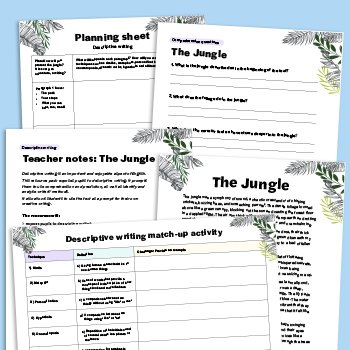Behaviour – What the army can teach schools about discipline

George Andrews reflects on his experiences of applying lessons and methods first learned on the parade ground to the playground…

We’ve all seen it on social media – reports of poor behaviour by groups of local youths, prompting outraged calls to ‘bring back National Service’ because ‘that’ll soon sort them out’ and ‘teach them some discipline’.
Whether you’re inclined to agree or not, this suggestion rears its head time and again as a somewhat naïve solution to an age-old problem. But what if – bear with me here – there were actually an element of practicality in this?
What if recognising the similarities between military service and the classroom could help teachers up and down the country solve the current post-COVID behavioural crisis that appears to be sweeping through schools?
As a former Army reservist now teaching across KS3 and 4, areas of my practice that are often remarked upon are my high expectations, along with the subsequent delivery of high classroom behaviour standards.
After a request from SLT to deliver a short CPD session at my school, I took time to reflect on how I’ve achieved this so consistently. I’ll now endeavour to set out here the lessons I believed I learnt from my own experience of working for the Army, and how I’ve subsequently applied these in the classroom.
Stark similarities
Now, admittedly, this approach is based solely on my own lived experience and observations of the similarities between both settings, but given the levels of concern regarding recent behavioural trends, why not think outside the box?
Because when you look more closely, the similarities between the two are stark. Within schools and army barracks, the vast majority of individuals you’ll encounter will be naïve young people lacking the basic skills their respective environments demand of them.
As such, strong direction and capable leadership will be necessary if they’re to be assisted in navigating the new events and momentous occasions they’ll encounter. In both settings, there will many young people trying each day to successfully learn new skills surrounded by others, often when away from home or at least outside of their favoured ‘safe space’.
Consistent language
According to the NSPCC, “Setting routines and boundaries helps children feel safe, cared for and important.” Some of the routines in my former professional life may have differed in the specifics, but they served a very similar purpose.
For trainee soldiers, routine is a fundamental part of Army life and for good reason. Regular repetition of basic procedures – drilling – develops a form of muscle memory that allows rudimentary functions to be completed without thought. That way, individuals are able to approach complex tasks more attentively – something that’s vital in high pressure situations involving contact with the enemy and genuinely life or death decision-making.
One would hope not to encounter such extreme situations in a school context, of course, but the setting of regular routines can deliver similar benefits when it comes to areas such as classroom entry and settling, transitioning between different tasks and whole class questioning.
For this to work, however, you need to maintain very high expectations of your students and remain consistent at all times. Having established what your routines and expectations are, if you then ask for silence, you wait for silence. You’re allowed to expect them to comply. If they don’t, that’s where consistency in applying your setting’s behaviour policy comes in.
Keep your language simple and tell the students what part of your expectations they’re not meeting. On the parade ground, commands invariably involve rigorously consistent language, regardless of whoever’s issuing them, to ensure consistency of outcomes. There’s no reason why a school setting should be any different.
Mark of respect
That said, let’s be clear: I’m not advocating a ‘Don’t smile until Christmas’ approach. It’s more of a ‘Don’t relent until Christmas’ approach that incorporates the obvious, yet vital addition of clear praise when students get it right.
Within a few weeks, I find that this combination of extremely high expectations, consistent routines and praise fosters a culture of compliance within a new cohort that goes on to form the basis of good relationships, which in turn makes my job of teaching them much easier! The students know the boundaries in my classroom.
They know what’s expected of them, and they know how to deliver. This barely differs at all from service life, where raw recruits very quickly learn what they should do, but more importantly, what they must not do.
Trending
Again, it’s important to stress that I’m not advocating here for the militarising of our schools. I am, however, suggesting a place for the kind of communication I observed in the Army, which is fundamentally about respect.
In my experience, when young people feel they’re being treated consistently, and that they can develop a relationship with you, they’ll see it as a mark of respect and will respond in kind. By being consistent, you’re also being fair.
I’ve found that a perceived lack of fairness is one of the most common gripes among students in school settings. What I do is make it plain from their first lesson in September that mine is a classroom in which they will be respected – provided they show respect in turn by following the instructions, rules and expectations I establish.
Fresh start
Crucially, this approach goes beyond the classroom. You must maintain this consistency during break time duties and indeed all around the school, since the students will expect you to. If circumstances demand that you must rebuke a student, ensure that they know what it’s for.
Be clear as to what their infringement was and how they can put it right – and no, that doesn’t have to mean doing 20 press-ups and sprinting to the far rugby posts. Explanations that are delivered in straightforward language will make it clear to them how they’ve disappointed you, and how not to do it again.
Most importantly, after you hold a restorative conversation with a student, remind them of the fresh start they’ll receive the next time they set foot in your classroom and then stick to it. Demonstrate it. I’ll even be extra nice to those students who have given me the most trouble by asking them about their weekends and stopping to talk when I pass them in the corridor.
These are all basics, I know – but it’s surprising how much can be forgotten as ‘professional amnesia’ settles in over time. Ultimately, this approach centres on building a foundation from which strong, positive relationships can be established. Students well-drilled in routines will commence work quicker and stay focused for longer.
The praising of good behaviour produces a positive environment in which those relationships can be effectively nurtured, delivering significant and substantial benefits across the wider school setting. It should almost go without saying that the importance of maintaining those good relationships can’t be overstated.
Rules of engagement
1. Verbal instruction at the start
Keep this concise, consistent and clear. Tell students how they’ll enter and get settled. Use the same language each time so that there can be no mistakes – it’s better to lose three to four minutes here than have to re-establish routines after a two-week holiday.
2. Prioritise routine
Be present and visible on entry and settling. If you tell them to enter silently, ensure you get silence. If they don’t deliver, go back out and try again. Take the time to prioritise your expectations.
3. Patience
Just like ‘thinking time’, give students a chance to get their behavioural responses right.
4. Behaviour policy language
It’s there to be used and everyone should be using it. There’s no better way of reminding students of the expectations in school and the important of meeting them. Again, consistency is key.
5. Praise those who get it right
If a student impresses you, tell them. By letting them know they’ve done a fantastic job, you can be the strict teacher that everyone likes.
George Andrews is a teacher of humanities











